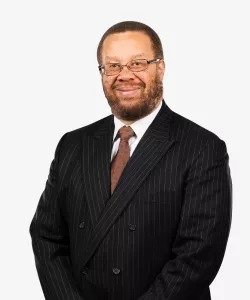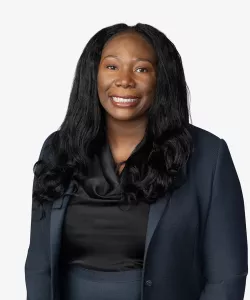Post-Chevron Employment Law Regulations: What to Expect
Forty years ago, the US Supreme Court’s decision in Chevron USA, Inc. v. National Resources Defense Council, 46 US 837 (1984), upended administrative law practice. In brief, that case, for which the “Chevron doctrine” is named, instructed courts to defer to an implementing agency’s reasonable interpretation of statutes under its purview. Chevron mandated a two-step process when interpreting such statutes.
- First, courts were tasked with determining “whether Congress had directly spoken to the precise question at issue.” If so, that concluded the inquiry. Courts “were to reject administrative constructions which [were] contrary to clear congressional intent.”
- However, if the statute was “silent or ambiguous with respect to the specific issue,” courts moved to Chevron’s second step. Courts were to assess whether the administrative agency had advanced a “permissible construction of the statute.” This applied even if the agency’s reading was not the “reading that the court would have reached if the question initially had arisen in a judicial proceeding.”
Chevron Overruled
Last month, in two consolidated cases — Loper Bright Enterprises v. Raimondo and Relentless, Inc. v. Department of Commerce, 144 S.Ct. 2244 (2024) — involving commercial fishing groups alleging that the National Marine Fisheries Service (NMFS) had exceeded its statutory authority by requiring their fishing vessels to compensate observers on board, the Supreme Court overruled the Chevron doctrine. The Court held that courts must “exercise their independent judgment” when “deciding whether an agency has acted within its statutory authority.”
An agency’s interpretation does not count for nothing. Rather, as the Court explained, “[c]areful attention” to the agency’s judgment “may help to inform the [judicial inquiry].” Additionally, when US Congress statutorily “delegates authority to an agency consistent with constitutional limits, courts must respect the delegation, while ensuring that the agency acts within it.” However, courts may not defer to an agency’s interpretation of a statute simply because it is ambiguous.
Effect on Employers
Although the consolidated cases are not employment related, employers are questioning whether Loper Bright undermines or alters the many regulations and guidance provided by employment-related agencies such as the US Equal Employment Opportunity Commission (EEOC), the National Labor Relations Board (NLRB), the US Department of Labor (DOL), the Occupational Safety and Health Administration (OSHA), and other workplace regulations with which they must comply.
The answer? So far, nothing has changed. Loper Bright jettisons no regulations. Nor does it call into question prior holdings that, based on Chevron, upheld specific agency actions. The Court held that the Loper Bright decision is prospective. However, Loper Bright will likely make long-standing agency regulations and interpretations more vulnerable to legal challenge. Here are some examples of what employers can reasonably expect.
The EEOC
The EEOC has been granted rulemaking authority under the Americans with Disabilities Act (ADA), the Age Discrimination in Employment Act (ADEA), Title VII of the Civil Rights Act of 1964, and, most recently, the Pregnant Workers Fairness Act (PWFA). The EEOC regularly exercises its authority by promulgating regulations and issuing nonbinding guidance. Historically, the EEOC’s interpretation of the law has been granted deference under Chevron, and interpretive judicial decisions are often consistent with the EEOC’s position. This continuity is likely to erode over time as courts reassess EEOC guidance and regulations.
The EEOC will also face new challenges in exercising its enforcement powers. Courts now have leeway to interpret ambiguities and gaps in the law, even where it is contrary to the EEOC’s position. While this tension is not new, courts will not have to give the EEOC the same level of interpretive deference as they have historically.
Even before Loper Bright, the EEOC’s regulations implementing the PWFA were subject to a legal challenge, and certain provisions are enjoined in Louisiana and Mississippi. With the EEOC having reduced judicial deference, Loper Bright may impact the outcome of these challenges.
On April 29, the EEOC issued updated enforcement guidance on workplace harassment. The guidance was updated to reflect, among other things, the Supreme Court precedent extending anti-discrimination protections to LGBTQ workers.
On May 13, attorneys general from Alabama Alaska, Arkansas, Georgia, Indiana, Iowa, Kansas, Kentucky, Mississippi, Missouri, Nebraska, Ohio, South Carolina, South Dakota, Tennessee, Utah, Virginia, and West Virginia filed a lawsuit in the US District Court for the Eastern District of Tennessee, challenging and seeking to block enforcement of the EEOC’s guidance as it pertains to transgender employees. They contend that the EEOC exceeded its statutory authority and impermissibly extended Title VII beyond its bounds. They also allege that the EEOC’s harassment guidance violates the constitutional separation of powers. Without Chevron deference in play, the EEOC’s interpretation of Title VII may be given less weight.
Loper Bright will not initially change settled issues of interpretation under Chevron. Interpretive judicial decisions altering decided issues or addressing novel questions will be piecemeal. However, it is unlikely that jurisdictions will rule consistently. Until trial court decisions progress through the appellate process, we anticipate a patchwork of case law with which employers will need to keep pace.
Employers should closely monitor these developments to ensure compliance with evolving standards.
The NLRB
At first glance, Loper Bright appears to have minimal impact on the NLRB. Unlike other administrative agencies, the NLRB does not often engage in formal rulemaking. Instead, it issues decisions interpreting the National Labor Relations Act (NLRA) through quasi-judicial rulings from its five-member board. These decisions, which can be far reaching and impact both unionized and non-unionized employers, are then appealable to the US Courts of Appeals and the Supreme Court. These courts typically grant the NLRB a certain degree of deference in interpreting the NLRA. Indeed, the DC Circuit confirmed in a ruling issued just weeks after Loper Bright that it would continue to apply a “very high degree of deference” to the NLRB’s decisions.[1]
However, Loper Bright may indicate a more skeptical view of the traditional deference from the Supreme Court. In June 2024, just before the Loper Bright decision, the Supreme Court announced in Starbucks Corp. v. McKinney that it would adopt a stricter test for reviewing requests for injunctive relief brought by the NLRB. This would grant the agency less deference to its assessment of a violation of the NLRA. If this trend persists, employers can expect courts to afford the NLRB less deference when reviewing its decisions in other areas as well. Over time, this could lead to more challenges to some of the NLRB’s recent decisions, which have aggressively pushed the boundaries of the NLRA, including decisions affecting union elections, noncompete agreements, and confidentiality provisions of severance agreements.
OSHA
Congress established OSHA through the Occupational Safety and Health Act (OSH Act) and granted it the authority to promulgate and enforce workplace safety regulations (referred to as safety “standards”). Loper Bright is likely to have a unique impact on OSHA and the way the agency issues formal adjudications and creates standards.
Employers facing an OSHA citation can plausibly allege that OSHA lacked the authority under the OSH Act to promulgate the standard underlying the citation. However, these challenges may lead to conflicting court decisions, making compliance more difficult for employers.
No longer able to rely on Chevron, OSHA likely will focus even more carefully on promulgating future standards that will withstand judicial scrutiny. The main question will be whether the standards fall within OSHA’s authority under the OSH Act. Given the increased risk for judicial scrutiny, the time it takes for OSHA to create standards will likely increase. However, future standards will likely adhere more closely to the OSH Act.
Employers can expect Loper Bright to strengthen the current court challenge to OSHA’s April 2024 Union Walkaround Rule, which allows union organizers to accompany OSHA inspectors on workplace inspections. Although OSHA’s rationale for the rule is to foster safer workplaces and aid employees in identifying and addressing potential safety issues, some courts may find that OSHA exceeded its authority under the OSH Act by improperly promoting union activity under the guise of safety regulations.
The DOL
The DOL is authorized to promulgate rules implementing the Federal Labor Standards Act (FLSA). As with EEOC regulations, it is not uncommon for new DOL rules to face legal challenges as they are rolled out. Currently, several DOL rules are being litigated, the most prominent of which are the salary threshold rules for FLSA overtime-exempt workers and rules for determining the existence of an independent contractor relationship.
Specifically, in April 2024, the DOL published its final rule that increases the salary level thresholds to qualify for the white-collar exemptions. The salary threshold is one fact in a multifactor test for the exemption to apply. The rule sets increased thresholds year over year through 2027, and future increases on a three-year schedule. The primary change to this rule is that the DOL exceeded its statutory authority because it improperly increased salary which, according to the challengers, is outside the scope of the DOL’s rulemaking authority.
On January 10, the DOL published its final rule on the factors used to determine whether a worker is an employee or an independent contractor under the FLSA. This rule is facing several challenges, again based on assertions that the DOL has exceeded its authority, and it also violates the Administrative Procedure Act and the US Constitution.
In the absence of Chevron deference, courts are empowered to use their own judgment to evaluate these challenges. This could impact existing notions of the DOL’s ability to raise wage thresholds and implement rules concerning other aspects of the FLSA. It is important for employers to monitor the outcome of these challenges, as misclassifying workers as exempt or as independent contractors can lead to costly errors.
Congressional Response
On July 23, a bill was introduced in the US Senate attempting to codify the Chevron deference doctrine. According to a press release issued by Sen. Elizabeth Warren (D-MA), one of the bill’s sponsors, this proposed legislation, the Stop Corporate Capture Act, “codifies the Chevron doctrine and strengthens the rulemaking process to block corporations from hijacking our government.” A similar bill was introduced in the US House of Representatives in March 2023 but stalled in committee. It is unknown whether this second effort will gain traction. For now, Loper Bright is the law.
Next Steps
With less judicial deference to federal agencies, the legal landscape may become unpredictable over time, potentially resulting in conflicting court decisions across jurisdictions. The lack of uniformity could create uncertainty for employers and make compliance with differing laws challenging. Employers must stay informed of employment laws, agency guidance, and judicial decisions that may impact them over time.
Please contact any of the authors or the ArentFox Schiff attorney who regularly handles your matters if you have questions about the impact of these rulings on your workplace.
Below are links to other ArentFox Schiff Chevron and Loper Bright alerts:
For more information on Chevron and Loper Bright, please refer to the below ArentFox Schiff alerts:
- Post-Chevron Health Care Regulations: What May Be in Store for Stark Law Litigation
- Post-Chevron Health Care Regulations: The Dawn of a New Day
- Nine Questions, Nine Answers: The Supreme Court’s Decision Overruling ‘Chevron Deference’
[1] Hospital de la Concepcion v. NLRB, Docket No. 22-01272 (DC Cir. Oct 24, 2022)
Contacts
- Related Practices




